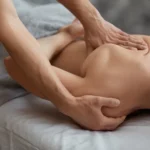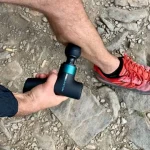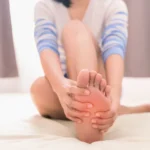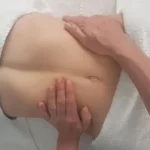Massage cups are more than just a wellness trend—they’re a powerful self-care tool used in cultures around the world. This ancient technique, known as cupping therapy, involves placing suction cups on the skin to lift tissues, boost circulation, and relieve tension.
Whether you’re new to cupping or looking to improve your routine, this complete guide will show you how to use massage cups effectively at home. You’ll learn about types of cups, cupping massage techniques, cellulite reduction, safety tips, and more—all grounded in the principles of traditional and modern cupping therapy.
Table of Contents
What Is Cupping Therapy and How Does It Work?
Massage and cupping therapy combine manual manipulation with suction to create a deeply therapeutic effect on the body. Cupping dates back to ancient Egypt, China, and Greece, where it was used to balance energy, detoxify, and heal the body.
Ventosa massage, the Filipino term for cupping, often uses glass or plastic cups placed on specific points along the body’s meridians. The technique draws up the skin and underlying tissue, which is believed to:
- Release tight fascia
- Stimulate energy flow (Qi)
- Reduce pain and inflammation
Today, cupping therapy—including modern and traditional forms of ventosa massage—is embraced by massage therapists, physical therapists, and athletes to improve performance, accelerate healing, and manage chronic tension.

Benefits of Cupping Therapy Using Massage Cups
Cupping provides a wide range of physiological and cosmetic benefits. Here’s a deeper look at how it helps:
💆♀️ Muscle Relaxation
The suction gently lifts the soft tissue, allowing it to decompress and improve mobility. This makes it a favorite among athletes for treating knots, stiffness, and delayed-onset muscle soreness (DOMS).
❤️ Improved Circulation
Cups stimulate blood flow to the treated area, delivering oxygen and nutrients while clearing out metabolic waste. This increased microcirculation supports healing in injured or stressed muscles.
🧘♂️ Stress Reduction
Massage cups activate the parasympathetic nervous system. Within minutes, you may feel a deep sense of calm wash over you, making cupping therapy an excellent complement to yoga or meditation.
💧 Detoxification & Lymphatic Drainage
Cupping helps clear stagnant lymphatic fluid and toxins. Combined with gliding massage movements, it’s especially effective for improving skin tone and reducing puffiness.
🌙 Improved Sleep
Many users report deeper sleep after a cupping session. This is likely due to a combination of nervous system relaxation and muscle tension release.
💫 Skin Smoothing and Cellulite Reduction
Cupping to reduce cellulite works by stimulating lymphatic flow and breaking down adhesions in connective tissue. With consistent use, the skin appears smoother, firmer, and more toned.
According to Healthline, while evidence is still growing, cupping therapy may reduce the appearance of cellulite through improved circulation and collagen stimulation.

Types of Massage Cups (Pros & Cons)
Choosing the right cup is key to your success:
🟣 Silicone Massage Cups
Best for: Beginners, face cupping, neck
- ✅ Easy to squeeze and reposition
- ✅ Great for gliding techniques
- ❌ Not ideal for deep suction work
🔵 Plastic Pump Cups
Best for: Adjustable suction on larger areas
- ✅ Offers precise control of pressure
- ✅ Great for back, thighs, and hamstrings
- ❌ Bulky, requires pump attachment
🔴 Glass Cups
Best for: Traditional fire cupping therapy
- ✅ Strong suction, professional-grade
- ✅ Retains heat well
- ❌ Risk of breakage, needs supervision
⚡ Electric Massage Cups
Best for: Tech-savvy users or muscle recovery
- ✅ Combines suction, vibration, and heat
- ✅ Easy to use and programmable
- ❌ Expensive and less portable
How to Use Massage Cups at Home (Step-by-Step)
Follow this practical guide to safely enjoy the benefits of cupping therapy at home. For a related technique, explore our lymphatic drainage massage guide.

✅ Step 1: Prep Your Space and Skin
Find a quiet, warm space. Lay out a towel, massage oil, your cups, and a mirror (for hard-to-see areas like your back). Clean the skin with soap and water.
✅ Step 2: Apply Light Oil
Use jojoba, almond, or coconut oil to reduce friction. Avoid heavy creams, which may interfere with suction.
✅ Step 3: Choose the Right Cup
Use:
- Small cups for the face or arms
- Medium for shoulders or calves
- Large cups for the back, glutes, and thighs
✅ Step 4: Create Suction
- Silicone: Squeeze and press onto skin
- Pump: Attach and draw air out with pump
- Electric: Turn on and adjust settings
The cup should stick firmly with a mild pulling sensation—never painful.
✅ Step 5: Apply a Technique
- Static cupping: Leave the cup in place 5–10 minutes for deep tissue release
- Gliding cupping: Move the cup gently in circles or long strokes for relaxation
- Flash cupping: Apply and remove cups quickly for energy stimulation
✅ Step 6: Release the Cup
Gently press on the edge of the cup to break the seal and lift off.
✅ Step 7: Aftercare
Wipe off excess oil, hydrate with water, and rest. Mild redness or cup marks are normal and fade within a few days.
🧴 Cupping to Reduce Cellulite: Tips, Science & Best Practices
Cupping therapy has gained popularity not only for pain relief and relaxation but also for its potential to improve the appearance of cellulite. While no treatment offers a miracle cure, cupping to reduce cellulite shows promise by stimulating lymphatic drainage, increasing circulation, and loosening fibrous connective tissue.
🔍 What Causes Cellulite?
Cellulite is caused by a combination of fat deposits, reduced lymph flow, and collagen fibers pulling down on the skin. These factors create a dimpled, uneven texture—especially around the thighs, buttocks, and abdomen.
Research published in the Journal of Clinical and Aesthetic Dermatology suggests that improving microcirculation and lymphatic flow can visibly reduce the appearance of cellulite over time.
🧪 How Does Cupping Help?
Cupping works on multiple levels:
- Lifts connective tissue
- Promotes blood flow
- Stimulates lymph drainage
- Encourages collagen production
A pilot study published in Complementary Therapies in Clinical Practice found that dry cupping applied twice weekly over 10 sessions led to visible improvements in cellulite grading and skin elasticity.
✅ Cellulite Reduction Routine (At-Home Guide)
- Warm up the area
Apply a warm towel or take a quick shower to loosen tissue and improve blood flow. You can also pair this with leg massage techniques to further boost circulation. - Apply oil generously
Use a body oil like almond, grapeseed, or anti-cellulite massage blends. - Use silicone cups
Medium to large silicone massage cups offer great flexibility. - Create suction
Squeeze and press the cup to the skin. - Glide in long upward strokes
Move the cup in slow, vertical lines toward the heart. - Repeat circular motions
Add overlapping circles for extra circulation boost. - Duration
Massage each area for 10–15 minutes. - Finish with hydration and rest
🗓️ Frequency & Expectations
- 3–4 sessions per week
- Expect visible results in 2 to 4 weeks
- Combine with dry brushing, hydration, and strength training
⚠️ Precautions
- Don’t overdo suction
- Avoid varicose veins, sunburn, or broken skin
- Clean cups between uses
🧠 Expert Insight
“Cupping works by increasing blood flow and removing stagnation. While it’s not a standalone treatment for cellulite, it’s a valuable adjunct to a healthy lifestyle.” — Dr. Elizabeth Bahar Houshmand

Safety Guidelines and Precautions
✅ Always:
- Start with light suction
- Clean cups before and after use
- Hydrate and rest post-session
🚫 Avoid:
- Broken or sunburnt skin
- Varicose veins
- Pregnant belly or deep abdominal cupping
- Cupping if you’re on blood thinners
Frequently Asked Questions on Massage Cups
Q: Can I do ventosa massage at home?
Yes, with silicone or pump cups.
Q: Will cupping leave bruises?
Yes—temporary red marks called “cup kisses.”
Q: Can I use massage cups before bed?
Absolutely—it may improve sleep.
Q: Can I cup over muscles after a workout?
Yes—helps with muscle recovery.
Q: Are massage and cupping better together?
Yes—they complement each other well.
Q: How long do you leave massage cups on?
5–15 minutes, depending on the area and goal. Less time is recommended for sensitive skin or facial cupping.
Q: Where not to put cupping cups?
Avoid placing cups over varicose veins, broken skin, mucous membranes, eyes, genitals, or bony areas like the spine.
Q: What kind of toxins does cupping pull out?
There’s no scientific evidence that cupping pulls out literal toxins, but it does promote lymphatic drainage, which helps remove cellular waste.
Q: What not to do after cupping?
Avoid hot showers, heavy exercise, alcohol, and caffeine for at least 4–6 hours. Give your body time to recover and flush out fluid.
Q: How do you use a pleasure cup?
Pleasure cups are a different type of suction tool used for sexual wellness. They create blood flow and heightened sensation but should not be confused with therapeutic massage cups.
Q: Why can’t you shower after cupping?
Cupping opens up the pores and softens the tissue. A hot shower afterward can lead to skin irritation or even dizziness. Wait a few hours before bathing.
Q: Which days to avoid cupping?
There are no medically required days to avoid cupping. However, avoid it before big physical events or if you’re feeling sick or dehydrated.
Q: Why do I feel sick after cupping?
Some people feel fatigued or flu-like as the lymphatic system activates and circulation increases. This typically resolves within 24 hours.
Q: Does cupping actually work?
Cupping has been shown to improve circulation, reduce pain, and support relaxation. While research is still ongoing, many people experience noticeable benefits.

Final Thoughts
Learning how to use massage cups gives you a low-cost, high-impact tool for relaxation, recovery, and skin health. Whether you’re exploring cupping therapy for stress, pain, or beauty, the key is consistency and care.
Massage and cupping are an ancient combination with modern benefits—especially when practiced as ventosa massage, which blends suction with holistic traditions from Filipino and Chinese wellness. With a little practice and consistency, massage cups can become a simple yet powerful part of your self-care routine.
🧴 Try it once, and you might be hooked for life.
📖 References
- Update evidence of effectiveness on pain relieving of cupping therapy: a systematic review and Meta-analysis of randomized controlled trials – Journal of Traditional Chinese Medicine
- Cleveland Clinic – What Is Cupping Therapy?
- What Are the Benefits of Massage Cups? – Healthline
- Cupping Therapy – Wikipedia
- Does Cupping Get Rid of Cellulite? – Healthline
⚠️ Disclaimer:
This article is for informational purposes only and does not constitute medical advice. Always consult with a licensed healthcare provider or certified massage therapist before beginning any new treatment, especially if you have pre-existing health conditions or concerns.






